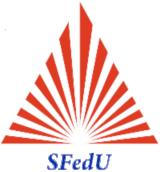-
Management of research and development of STS
Introduction to the subject. Basic concepts and definitions
Management input to the design and development of at.
Planning design and development at
Managing development of technical proposals (avant-project)
Managing development of a sketch (preliminary) project
Development management technical project
The management of work design
A critical review of the project
Analysis of design and development at
Verification of design and development at
Validation of the project at
Control the output of design and development at
Configuration management sample of at
Change management project
Supervision of products in production at
Supervision of products in use at
Features of process control design and development at
-
Quality management in aviation industry
Introduction. The goals and objectives of the course. The principles of product quality assurance
Family of international standards series ISO 9000 for quality management products
The rationale of the QMS. Terms and definitions QMS
The quality manual
Document management protocols and quality
The company's policy in the field of quality. Customer orientation
Planning of the QMS. Goals in the field of quality
Responsibility, authority and exchange of information
The management of resources. Staff
Planning of enterprise activity
The processes associated with the consumer
Manage the design and development Planning, input, output, project analysis and development
Procurement management
Software design and research activities
Change, analysis and improvement in the QMS. Audits. Correcting and warning actions
System quality management methods
-
Certification of aviation equipment
The goals and objectives of the course. Basic information about certification.
Safety. Basic information about certification of aviation technology (at).
System of certification of aviation equipment in the U.S., Europe and the CIS.
The system of certification of aviation equipment in Russian Federation.
Basic information about the aviation rules (AP) and airworthiness (NLG).
Aviation rules part 21, 23, 25 and APOLS.
Aviation rules part 27, 29, 33, 34, 35, 36, 39, 145, 183.
Communication design and certification at. Classification of aircrafts (AC). Certification Developer at.
The stages of aircraft certification. The certification basis (SB).
The stages of aircraft certification. The table of correspondence (TC).
Application for a certificate type (ST). The stage layout of the aircraft.
Certification testing of the aircraft. Bench tests of the aircraft.
Organizing and conducting the first flight of the aircraft.
The certification factory test.
Certification control tests (MIS) and operational tests. The issuance of the type certificate.
Certification of production and products at.
-
The construction of the chassis and control systems
Features of design of control systems for AIRCRAFT. The role of the person in control system LA. The contents of the Technical specifications and baseline data for the development of the control system
Basic requirements for the design of control systems LA
The main stages of the design of control systems
Constructive elements of mechanical transaction management system LA
Laying of tracks of the control plane (trace). Vibration control wiring. Frequency-phase characteristics (CFH)
Efforts on arms control
The calculation of the control strength. Features of design of elements mechanical controls
Design of boot devices. Calculation of springs
Constructive measures to ensure the reliability of the control systems and increase safety. Further development of control systems
General provisions. The composition of technical specifications and requirements for the design of the chassis
The definition of the type, size and number of wheels mounted on the support chassis
The definition of the power circuit chassis
Build the kinematic scheme of the gear
The distribution of the normalized maximum work between wheels and shock absorber
Identify the current chassis loads
The design of the liquid-gas absorber. The diagram of work and the definition of the parameters of the shock absorber
Calculation of basic load rating and design loads lifts chassis
-
Design of aircraft
Purpose and structure of the course. Introduction to the course design.
The design object is a complex technical system.
The plane in the structure of complex aircraft complex.
The overall design of the aircraft.
The outer design.
The preliminary design.
Limitations in the design.
Main parameters and characteristics of the aircraft.
The analysis and selection of scheme LA and the type of the power plant.
The selection scheme of the aircraft on separate grounds.
Select the type of the power plant.
The algorithm for determining the main parameters of the aircraft.
The weight of the design aircraft.
The layout of the aircraft. Aerodynamic configuration.
Body-weight layout.
The alignment of the aircraft.
-
The efficiency of aviation complexes
The goals and objectives of the course. Introduction
Classification of performance criteria
Functional efficiency
Weight of the perfection of the aircraft
The energy excellence of the aircraft
The performance of the aircraft
Weight returns payload, transportation to the specified range
Given the performance of the aircraft
Quality criteria of the aircraft
The production efficiency of the plane
The economic efficiency of the aircraft operation
The competitiveness of the aircraft, indicators of competitiveness
A comprehensive analysis of the efficiency of aviation complexes
-
Features the design of passenger and cargo aircraft
Basic requirements and limitations applicable to modern passenger and cargo planes, their influence on the design process
Analysis and comparison of constructive-power circuits of modern passenger and cargo aircraft. Modification of passenger aircraft into freighters
The main types of structural assemblies glider passenger and cargo aircraft, made of metal and composite materials
Features the design of passenger and cargo aircraft
Methods optimization of design parameters of passenger and cargo aircraft
The choice of material of construction. Factors influencing the choice of material
The design of the parts produced by different technological ways
The principles of rational design of passenger and cargo aircraft
Classification of compounds according to structural and technological characteristics
Design butt nodes
Design panels
The design of the ribs
Design frames
Principles of design of units of a glider passenger and cargo aircraft. Safely damaged airframe of the aircraft with a long service life. The restrictions imposed on the wing of KSS.
Principles of design of units of a glider passenger and cargo aircraft. Monolithic construction. The task of construction.
Principles of design of units of a glider passenger and cargo aircraft. Design design of the positive elements of the longitudinal set of a wing. Features of design design of interface panels, cut the edges of the panels and stringers.
Principles of design of units of a glider passenger and cargo aircraft. Brief technical requirements for the design of the fuselage. The development of KCC fuselage. Design shell of the pressurized cabin.
-
Design features of aircraft maneuvering
Introduction. The goals and objectives of the discipline
The stages of development and classification of aircraft maneuvering
The relationship of maneuvering characteristics with the design parameters
The influence of the main parameters of the power plant for the maneuverability of the aircraft
The choice of parameters of wing shape in the plan
Directions of improving of handling of polars by improving aerodynamic layout
Types of control system and stability requirements of the maneuverable plane
The basic layout solutions that ensure the stability of the aircraft in the longitudinal channel
The basic layout solutions, providing lateral stability of the aircraft
The main elements of the system SUPR maneuverable plane
Constructive and layout decision in a maneuvering aircraft
Promising fighters. Requirements to the tactics of air combat
Requirements speed cruising flight
New modes of maneuvering
The main directions of development of new constructive and technological solutions
-
Features of design of seaplanes and amphibians.
Classification of seaplanes
The buoyancy of a seaplane
The stability of a seaplane
The buoyancy of a seaplane
The concept of gliding of a seaplane
Fundamentals of the theory of similarity
Modeling of movement of a seaplane
The wave motion of water
Fundamentals of the theory of planing
The steady-state gliding plate
The hypothesis of flat sections
The immersion of the wedge
Steady gliding the flat-keeled bottoms
Stability and planing. Characteristics of resistance of planing
Loading of a seaplane when operating on the water
Rationing loads on the bottom of the boat seaplane
Features of design of seaplanes and aircraft amphibians



